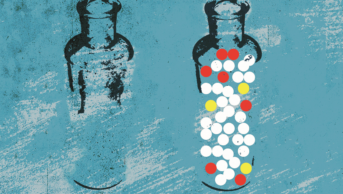
Thomas Nugent / Wikimedia Commons
Homeopathic teething products licensed in the UK are safe, says the Medicines and Healthcare products Regulatory Agency (MHRA), after the US Food and Drug Administration (FDA) issued a safety warning about US products.
The MHRA, which regulates medicines and medical devices in the UK, is advising parents of infants and young children not to use unlicensed homeopathic teething tablets or gels that may be available online because of the risk of side effects. But it says that products licensed in the UK — Nelson’s Teetha Teething Gel and Teetha Teething Granules, Boots Teething Pain Relief, Boiron’s Camilia Oral Solution and Helios Homoeopathy Ltd’s ABC 30C Pillules — are unaffected by the US warning and can continue to be used.
Siu Ping Lam, MHRA director of licensing, says: “If you have given your child any unlicensed homeopathic products and they experience side effects, you should contact your doctor for advice.
“Anyone who has bought unlicensed homeopathic products online should not use them and [should] return them to a pharmacy for disposal.”
The FDA issued a warning on 30 September 2016 advising parents to dispose of homeopathic teething tablets and gels in light of an ongoing inquiry into their safety. It has warned parents not to use such products because of a risk of serious side effects, such as seizures, difficulty breathing and muscle weakness.
In the MHRA statement, issued on 7 October 2016, the regulator highlights guidance from the National Institute for Health and Care Excellence, which recommends that self-care measures, such as gentle rubbing of the gum and allowing the child to bite on a clean and cool object, should be used for the initial management of teething symptoms. Paracetamol or ibuprofen suspension, used according to instructions, can be considered for infants aged three months or over.


